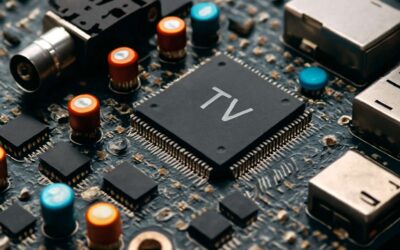Understanding Motherboard to Power Supply Cables
Types of Power Supply Cables for Motherboards
In the intricate dance of building a powerhouse PC, understanding the motherboard to power supply cable becomes essential. These cables serve as the vital arteries, channeling electrical vitality from the power supply to the motherboard, ensuring every component receives the necessary energy to thrive. Without them, even the most advanced hardware remains dormant, like a sleeping giant awaiting awakening.
There are several types of power supply cables for motherboards, each designed to cater to different power delivery needs. The primary ones include the 24-pin ATX cable and the 8-pin CPU power cable, both crucial for stable operation. As technology advances, modular power supplies have introduced more specialized cables, making cable management both easier and more efficient.
- 24-pin ATX cable – the main power conduit for the motherboard
- 8-pin CPU power cable – dedicated to the processor’s power demands
- Additional PCIe cables – for graphics cards and other expansion components
Navigating the world of motherboard to power supply cable options reveals a universe of compatibility and performance, where each cable plays a pivotal role in the symphony of your digital creation.
Role and Importance of Power Cables in PC Building
In the intricate ballet of assembling a high-performance PC, the motherboard to power supply cable is often overlooked, yet it holds the key to unlocking the machine’s true potential. These cables are more than mere connectors; they are the lifelines that breathe vitality into each component, transforming raw hardware into a symphony of digital precision. Without a reliable power supply cable, even the most cutting-edge motherboard remains inert, a silent testament to potential unrealized.
Understanding the role of the motherboard to power supply cable illuminates its importance in ensuring stability and efficiency. It’s not just about connecting power; it’s about delivering it with finesse, maintaining consistent voltage, and preventing system crashes. As technology evolves, so does the complexity of these cables—each designed to meet specific demands, from powering the CPU to fueling high-end graphics cards. The harmony between the motherboard and power supply cable ensures your build performs seamlessly, like a well-rehearsed orchestra.
Components and Specifications of Power Supply Cables
Motherboard Power Connectors
In the realm of PC craftsmanship, the components and specifications of the motherboard to power supply cable are often the unsung heroes behind a stable and efficient build. These connectors serve as the vital arteries, channeling energy from the power supply to the motherboard, fueling every digital heartbeat. Their design and compatibility are crucial, especially when considering the intricate dance of power distribution in high-performance systems. A well-crafted motherboard to power supply cable not only ensures seamless connectivity but also guards against potential electrical hiccups that could compromise your entire setup.
Key specifications to consider include the pin configuration, cable gauge, and overall wattage capacity. For example, the 24-pin connector is the standard for most motherboards, delivering essential power, but modern systems often demand additional 8-pin or 4+4-pin CPU power cables. These specifications must align precisely with your motherboard and power supply, creating a harmonious symphony of energy flow.
- Pin count and configuration
- Cable gauge for durability and safety
- Wattage capacity to support high-end components
- Compatibility with modular or non-modular power supplies
Power Supply Unit (PSU) Connectors
The intricate dance of energy within a computer hinges on the meticulous design of the motherboard to power supply cable. These cables are more than mere conduits; they are the lifelines that sustain the delicate balance of power essential for high-performance systems. The components and specifications of these cables are crafted with precision, ensuring that every watt is delivered seamlessly and safely. Their pin configurations, for example, are tailored to match specific motherboard and power supply combinations, preventing mismatch errors that could jeopardize stability.
Choosing the right cable gauge is equally vital, as it guarantees durability and safety under demanding workloads. A thicker gauge reduces resistance, allowing higher wattage transfer without overheating. Modern setups often require cables supporting substantial wattage capacity—particularly when high-end components are involved—making compatibility with modular or non-modular power supplies a key consideration. These factors collectively forge a harmonious energy flow, transforming raw electrical potential into the vibrant pulse that powers your digital universe.
Selecting the Right Motherboard to Power Supply Cable
Compatibility Considerations
In the intricate dance of building a formidable PC, ensuring seamless motherboard to power supply cable compatibility is paramount. An incompatible cable can turn a promising setup into a frustrating puzzle. It’s not just about plugging in; it’s about understanding the subtle nuances that govern these connections, especially when considering the diverse range of motherboard to power supply cable types available today.
Choosing the right cable involves more than matching connectors; it requires awareness of power delivery standards and the physical design of your motherboard. For instance, some high-performance motherboards demand a specific wattage and connector configuration, making it essential to verify compatibility before purchase. A mismatch here can lead to insufficient power flow or even hardware damage, which no enthusiast wants to face.
When evaluating options, consider these key factors:
- Connector type and pin configuration
- Wattage capacity of the cable
- Physical fit and clearance within your PC case
Ensuring the correct motherboard to power supply cable is not just about safety—it’s about unlocking the full potential of your system while safeguarding your investment. The right cable acts as the essential bridge between power source and motherboard, making all the difference in achieving peak performance and stability.
Cable Quality and Durability
In the realm of PC building, a cable’s quality is often the unsung hero—yet, it’s the foundation upon which system stability rests. The motherboard to power supply cable must not only fit snugly but also boast durability that withstands the rigors of continuous operation. Cheaply manufactured cables are a gamble—one that can lead to power fluctuations or, worse, hardware failure. Investing in high-quality cables ensures consistent power delivery, safeguarding your prized components and preventing that dreaded shutdown during a critical gaming session or rendering project.
When selecting a motherboard to power supply cable, examine the build materials and the manufacturer’s reputation—these are the hallmarks of durability. A well-crafted cable will feature reinforced connectors and premium insulation, reducing wear over time. Remember, a resilient cable isn’t just about longevity; it’s about maintaining optimal power flow, especially when demanding high-performance motherboards. For those who cherish their rigs, a robust, reliable motherboard to power supply cable isn’t just an accessory; it’s an essential investment in system integrity.
- Check for high-quality shielding to prevent electromagnetic interference.
- Opt for cables with reinforced connectors for added durability.
- Ensure the cable’s wattage capacity aligns with your motherboard’s power requirements.
Future Upgrades and Expandability
As technology advances, the importance of selecting a motherboard to power supply cable that can accommodate future upgrades becomes increasingly vital. A system built today may evolve into a powerhouse tomorrow, demanding greater power capacity and more sophisticated connections. Opting for a cable with adaptable specifications ensures your rig remains robust through the years, seamlessly supporting high-performance components and expanding features.
Consider the potential for expansion—your motherboard to power supply cable should not only meet current wattage needs but also provide room for growth. Look for cables with higher wattage capacity and flexible shielding, designed to handle increased power loads without compromising stability. This foresight transforms a simple connection into an enduring backbone of your system’s evolution.
In essence, investing in a motherboard to power supply cable that supports future upgrades safeguards your setup against obsolescence, allowing your dream machine to grow in harmony with your ambitions. When every component is a reflection of your passion, choosing the right cable becomes an act of faith—trusting it to carry the promise of tomorrow’s possibilities.
Installation and Troubleshooting of Motherboard Power Cables
Step-by-Step Installation Guide
When it comes to ensuring your PC’s stability, the motherboard to power supply cable connection is often overlooked—yet it’s the backbone of a reliable build. A secure and precise connection is crucial; even a slight misfit can lead to unpredictable system behavior. The process of installation isn’t just about plugging in; it’s about understanding the subtle nuances that guarantee a seamless power flow, which can be the difference between a smooth startup and a troubleshooting nightmare.
To avoid common pitfalls, follow this step-by-step approach: First, power down your system completely and disconnect the power supply. Carefully align the motherboard to power supply cable connector with the designated port on the motherboard. Ensure the pins are correctly oriented—forcing it can damage both the cable and the motherboard. Once aligned, firmly press until you hear a click or feel resistance. If your build includes multiple power cables, double-check each connection—particularly the 24-pin motherboard power connector and the CPU power cable.
In troubleshooting, a common issue is loose connections or improper seating, which can cause boot failures or unstable performance. If problems persist, inspect the cable for any visible damage or bent pins. Re-seat the cable, ensuring each connection is snug and secure. Remember, a high-quality motherboard to power supply cable isn’t just about safety; it’s about delivering unwavering power—an essential component for any enthusiast aiming for peak performance!
Common Issues and How to Fix Them
In the delicate dance of building a reliable PC, the motherboard to power supply cable often plays a silent yet pivotal role. Overlooking this connection can be a subtle betrayal, leading to unpredictable startup issues or system crashes. The installation process demands patience and precision—forcing a connector can cause irreversible damage or introduce hidden faults that only surface when you least expect them.
Common issues in this realm often stem from loose or improperly seated motherboard to power supply cable connections. When troubleshooting, it’s vital to visually inspect the cable for bent pins or visible damage, as these small imperfections can sabotage your system’s stability. Re-seat the cable carefully, ensuring each pin aligns perfectly with its socket. Remember, a snug fit isn’t just about safety—it’s about the unwavering flow of power essential for peak performance.
In some cases, the problem lies in the quality of the cable itself. A subpar motherboard to power supply cable can cause voltage drops or intermittent power delivery, especially during demanding tasks. To prevent this, always opt for high-quality cables and double-check the compatibility with your power supply unit (PSU). When dealing with multiple power cables, such as the 24-pin motherboard connector and CPU power cables, a systematic approach—like following a numbered installation process—ensures nothing is overlooked.
Safety Tips
In the intricate dance of constructing a resilient PC, the motherboard to power supply cable often remains an unsung hero—silent yet vital. Ensuring this connection is secure is not merely a matter of convenience but a fundamental safeguard against system instability. During installation, patience becomes your ally; forcing a connector can cause irreparable damage or introduce elusive faults that manifest only under stress.
Safety hinges on a few critical principles. First, always power down and unplug your system before handling the motherboard to power supply cable. Ground yourself to prevent static discharge, which can damage sensitive components. When connecting, verify that each pin aligns perfectly—misalignment can lead to voltage drops or even short circuits. A firm, snug fit guarantees the uninterrupted flow of power, essential for system stability and longevity.
Troubleshooting begins with careful visual inspection—bent pins, frayed wires, or visible damage are telltale signs of compromised cables. If issues persist, consider replacing the motherboard to power supply cable with a high-quality, compatible version. Remember, compatibility extends beyond physical fit; ensuring the cable supports your power supply’s wattage and specifications is crucial.
In complex builds, systematic approaches—such as following a numbered installation sequence—help prevent overlooked connections. This is especially important when dealing with multiple cables, like the 24-pin motherboard connector and CPU power cables, where a misstep can cascade into unpredictable system behavior. Ultimately, the integrity of the motherboard to power supply cable is a cornerstone of a stable, reliable PC—an unassuming yet indispensable link in the chain of performance.
Enhancing PC Performance through Optimal Power Cable Setup
Cable Management Best Practices
A clean and efficient motherboard to power supply cable setup can dramatically boost your PC’s performance. Proper cable management not only improves airflow but also reduces the risk of electrical issues that can cause system instability. When cables are neatly organized, components stay cooler and operate more reliably, extending the lifespan of your hardware.
Investing in high-quality cables and routing them carefully is essential. Use cable ties or Velcro straps to secure excess slack, preventing accidental disconnections and clutter. For optimal airflow, avoid crossing cables unnecessarily—this minimizes interference and enhances cooling efficiency. Remember, a well-managed cable setup promotes better power delivery and reduces strain on your motherboard to power supply cable connections. For those looking to future-proof their builds, consider modular power supplies that allow for tailored cable management, making upgrades seamless and clean.
Upgrading to High-Quality Cables
In the intricate dance of digital mastery, the pathway from motherboard to power supply cable is often overlooked—a silent conduit that holds the potential to elevate your PC’s performance to new heights. An optimized power cable setup isn’t merely about aesthetics; it’s about unlocking the full life and stability of your hardware. When high-quality cables are intertwined with thoughtful routing, the system breathes easier, operating cooler and with greater reliability.
Choosing premium cables ensures minimal resistance and consistent power delivery, which can significantly influence overall system stability and longevity. Incorporating carefully routed motherboard to power supply cables reduces strain on connectors and maintains a clean internal environment—an essential factor for enthusiasts aiming to future-proof their builds. Consider the advantages of modular power supplies, which allow for tailored cable management, making upgrades seamless and maintaining an uncluttered, efficient airflow path. The harmony between quality cables and meticulous routing results in a more resilient, high-performing PC, where every watt is delivered precisely where it’s needed—fueling your digital ambitions with unwavering power.
Avoiding Power Delivery Bottlenecks
When it comes to unleashing your PC’s true potential, the devil is in the details—specifically, the motherboard to power supply cable. Even the most cutting-edge hardware can fall flat if power delivery isn’t optimized. Poorly routed or subpar cables create bottlenecks, risking dips in performance and stability.
Think of it like water flowing through a garden hose—kinked or clogged, and the flow stops or becomes inconsistent. Ensuring your motherboard to power supply cable is of high quality and properly managed minimizes resistance, so your system runs cooler, quieter, and more reliably.
For those aiming to unlock peak performance, pay attention to cable routing. A tidy setup not only prevents strain on connectors but also reduces electromagnetic interference—keeping your digital ecosystem humming smoothly. Remember, a well-planned power cable layout is essential for avoiding power delivery bottlenecks and ensuring every component gets its fair share of wattage.




0 Comments